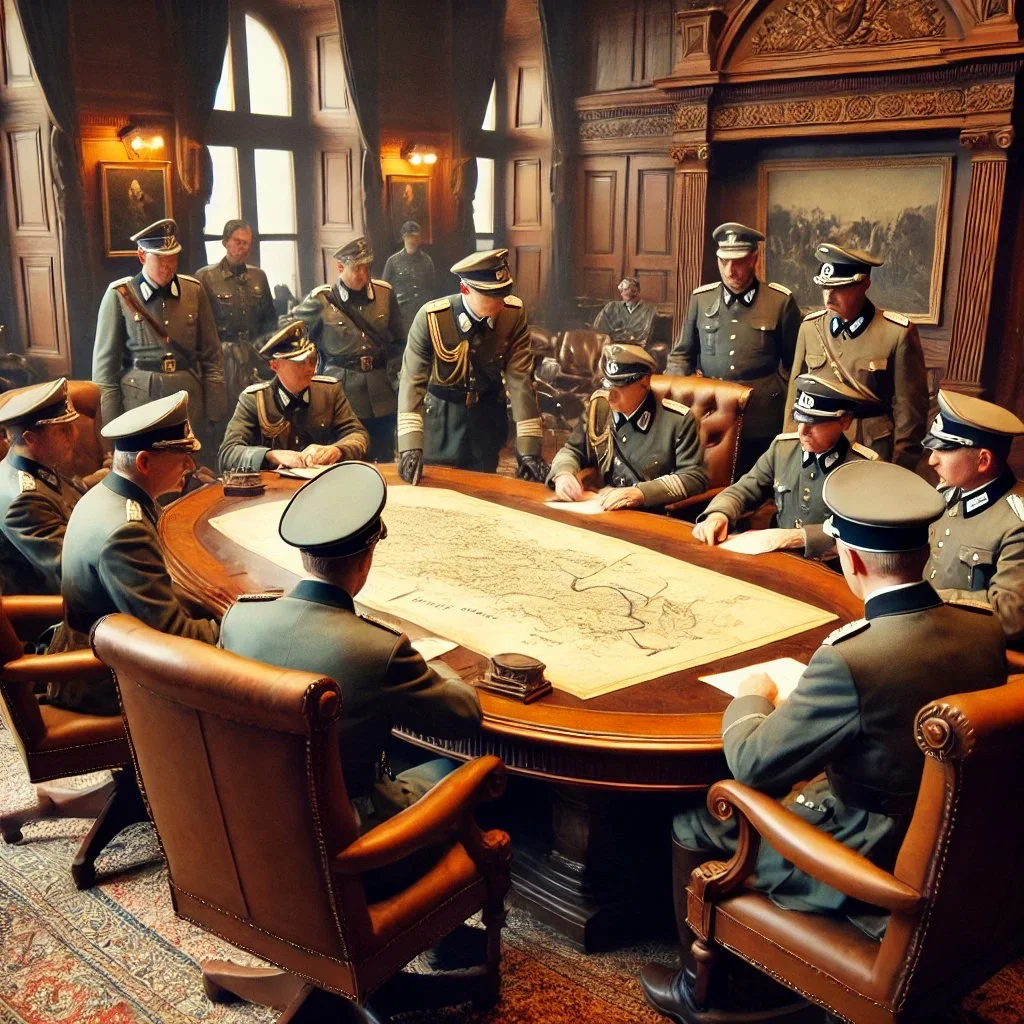Adolf Hitler’s rise to power in 1933 marked a drastic shift in German governance from a parliamentary democracy to a totalitarian regime. This transformation was characterized by the rapid elimination of democratic institutions and the consolidation of power entirely under Hitler’s control. The structure of leadership and governance in Nazi Germany was unique, characterized not by traditional democratic roles such as senators but by a cadre of officials personally loyal to Hitler and committed to the Nazi ideology.
Consolidation of Power
The initial step in establishing total control was the passing of the Enabling Act in March 1933. This act was pivotal as it granted Hitler the authority to enact laws without the involvement of the Reichstag, Germany’s parliament, which effectively ceased to function as a legislative body and instead served as a rubber stamp for Hitler’s decrees. The act marked the end of the Weimar Republic’s democratic structures and laid the foundation for a dictatorship governed through decrees and the Nazi Party hierarchy.
Key Appointments and Their Roles
Hitler’s regime was marked by the appointment of key figures who were chosen not through a formal hiring process but based on their loyalty to the Führer and the Nazi Party. These appointments were instrumental in carrying out the regime’s goals across various sectors:
-
Heinrich Himmler: Appointed as the leader of the SS, Himmler was pivotal in enforcing Nazi racial policies and overseeing the concentration and extermination camps that marked the Holocaust.
-
Hermann Göring: Holding multiple roles, including head of the Luftwaffe and Reich Minister of Economics, Göring was crucial in preparing Germany for war and managing its economy to support military objectives.
-
Joseph Goebbels: As the Minister of Propaganda, Goebbels controlled all media, ensuring that it propagated Nazi ideology. His role was critical in maintaining the Nazi grip on German society through censorship and propaganda.
-
Albert Speer: Initially Hitler’s architect, Speer later became the Minister of Armaments and War Production, significantly impacting Germany’s war readiness through his organizational and logistical skills.
-
Rudolf Hess: Serving as Deputy Führer until his mysterious flight to Britain in 1941, Hess was involved in numerous governmental roles and acted as a key intermediary between Hitler and the party.
-
Martin Bormann: As Hitler’s private secretary and head of the Party Chancellery, Bormann was a powerful figure within the inner circle, controlling access to Hitler and managing the flow of information.
-
Joachim von Ribbentrop: As the Foreign Minister, Ribbentrop was instrumental in negotiating the treaties and alliances that supported Nazi territorial expansion.
The governance of Nazi Germany can thus be understood not through a lens of traditional administrative roles such as senators or congressmen but as a rigid hierarchy dominated by Hitler’s close associates. Each member of this inner circle managed specific aspects of state control, from propaganda and economic management to military operations and racial policy execution. The effectiveness of this governance structure was rooted in its ability to mobilize all state resources towards the Nazi agenda, leaving catastrophic impacts on Europe and its populations.
Conclusion
The leadership structure of Nazi Germany under Adolf Hitler was a critical component of its totalitarian regime. It was characterized by centralized control, suppression of dissent, and aggressive execution of its expansionist and racial policies. Understanding the dynamics of this leadership and their roles provides insight into how power can be centralized and abused, serving as a cautionary tale for future generations.



To see our Donate Page, click https://skillsgaptrainer.com/donate
To see our YouTube Channel, click https://www.youtube.com/@skillsgaptrainer